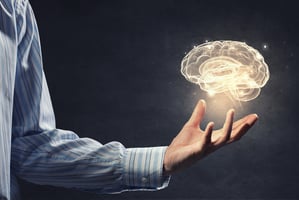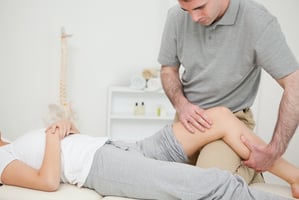What are the Effects of Stroke?
The Problem of Weak Muscles After Stroke
One Effect of this Huge and Life-changing Event – Weak Muscles After Stroke…
and What You Can Do About It
The Stroke Association reports, almost three quarters of stroke survivors are affected by leg weakness, and more than three-quarters are affected by arm weakness. When you have weak muscles, it can be difficult to walk, move your arms or hold objects.
Weakness on one side of the body is often referred to as hemiparesis (‘half-weakness’), or if it is more severe, the term used is often hemiplegia (‘half-paralysis’). Weakness or paralysis on one side is very common following stroke.
Everyday activities may be difficult if you have weakness or paralysis.
Having weakness in your leg may lead to you falling, slipping, or tripping. You may experience ankle instability when you put weight on the weak foot, and it may turn over.
The Cause of Muscle Weakness
Muscles are usually signalled to contract by a message sent from the brain. Muscle weakness following stroke is caused by interruption of these signals from the brain to the muscles. The severity of the weakness depends upon the area of the brain damage as well as the severity and extent.
Furthermore, a secondary cause of weakness can quickly follow on from this interruption in neurological signal. As a result of the lack of signal from the brain, muscles are not used and consequently they begin to waste or atrophy from disuse. This then leads to further weakness and deconditioning.
Foot Drop
If the front of your foot catches on the floor when you step, you may have foot drop. This is caused by weakness in a specific group of muscles in your lower leg and foot that work to lift your foot as you walk. This condition can lead to difficulty walking as it may mean you need to lift your foot higher than usual from the hip, or swing your leg out to the side, to avoid catching your toes. This difficulty can, in turn, lead to a higher risk of falls.
Treatment for Muscle Weakness
There are various treatment options and compensatory strategies available through Physiotherapy or Occupational Therapy.
Physiotherapy Treatment for Muscle Weakness
A physiotherapist will assess your specific weak areas and recommend appropriate exercises and activities specifically for you. These may include a strengthening or muscle re-education programme for your arm and/or your leg, or a mobility and balance programme. The therapist may also recommend use of foot splints or walking aids.
Please see our ‘Services’ and ‘Therapists’ pages for details on how we might be able to help you:
https://www.strokeandneurotherapy.co.uk/services
https://www.strokeandneurotherapy.co.uk/therapists
Occupational Therapy Treatment for Muscle Weakness
An occupational therapist will also assess your specific weak areas and recommend an individualised recovery programme. Their approach will be slightly different to a physiotherapist in that they will likely focus on functional activities and how you can be helped to manage these as independently as possible despite your weakness. They are experts at identifying the right equipment to maximise your function, independence, and safety. They will also use functional activities to help you strengthen your muscles and regain the use of the weak area as much as possible, in a similar way to a physiotherapist.
There is a lot of overlap between physiotherapy and occupational therapy with some distinct differences too, and it can be best when they work together using a joint approach.
Please see our ‘Services’ and ‘Therapists’ pages for details on how we might be able to help you:
https://www.strokeandneurotherapy.co.uk/services
https://www.strokeandneurotherapy.co.uk/therapists
Treatment for Foot Drop
As well as a strengthening and muscle re-education programme as outlined above, treatment options for foot drop also include use of an ankle foot orthosis or use of a functional electrical stimulation device.
Ankle Foot Orthosis (AFO)
This is a type of brace or splint that holds your foot in the correct position.
Functional Electrical Stimulation (FES)
This is a device that attaches to your leg and foot to give electrical stimulation to the correct muscles at the correct point during the walking cycle, thereby triggering your weak muscles to contract to ensure the foot is in the correct position. The electrical impulses delivered by the machine replace the signals from your brain that have been interrupted by the stroke.
Both aids are designed to help the person lift their foot and clear the floor as they walk. In this way, their overall walking pattern is improved, which helps to reduce the need for compensatory movement patterns that may lead to secondary problems.
Your physiotherapist will be able to advise and guide you on which aids might be suitable for you.
For more information on this and other topics relevant to stroke please visit The Stroke Association Website:
Please also see our other blog on the effects of stroke:
https://www.strokeandneurotherapy.co.uk/stroke-and-neuro-therapy/possible-effects-after-a-stroke





